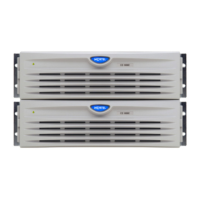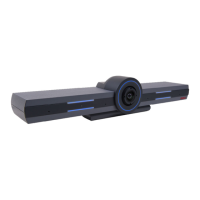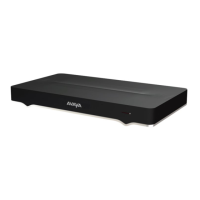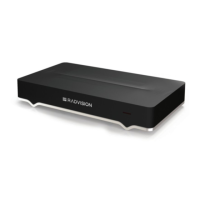Cross-connecting the MDF
The MDF cross-connects NE-A25B cables connected to SILC and UILC ports with building
wiring connected to ISDN BRI terminals.
Each SILC provides eight four-wire full-duplex ports. These ports are connected to building
wiring to form DSLs. These ports are polarity-sensitive. Signal polarity must be maintained
along each loop.
Each UILC provides eight two-wire full-duplex ports. These ports are connected to twisted pair
building wiring to form DSLs. These DSLs are not polarity-sensitive and, although
recommended, it is not necessary to maintain signal polarity along each loop.
Cross-connecting SILC and/or UILC ports to the building wiring
Perform the following steps to cross-connect the SILC and/or UILC ports to the building
wiring.
1. Identify the card type (SILC or UILC) for a connector on the MDF. Refer to the IPE
or CE module card location form at the end of this chapter, which shows the card
type connected to each I/O panel connector.
2. Identify transmit and receive pairs on the top of the labeled distribution strip for the
card type and module type you are connecting. To identify SILC or UILC ports and
their pin numbers, refer to
Table 4: NT8D37 IPE module SILC and UILC pair-
terminations for connectors A, E, K, R (12-cable configuration) on page 31 through
Table 10: Card location form: NT8D37 IPE module (12-cable configuration) on
page 43, which begins on
Table 4: NT8D37 IPE module SILC and UILC pair-
terminations for connectors A, E, K, R (12-cable configuration) on page 31.
Note:
In Table 4: NT8D37 IPE module SILC and UILC pair-terminations for connectors
A, E, K, R (12-cable configuration) on page 31 through Table 10: Card location
form: NT8D37 IPE module (12-cable configuration) on page 43, the cable pair
designated T- T+ is the transmit pair and the pair designated R+ R- is the receive
pair of the S/T interface. The cable pair designated T R is the Tx and Rx of the
2B1Q full-duplex U interface.
3. Identify building wires connected to the bottom of the distribution strip. Refer to the
Building Cable Plan, which identifies wires between distribution frames and wall
outlets. The Building Cable Plan is developed according to instructions in the
"Planning the Site" section in Avaya Communication Server 1000M and Meridian 1
Large System Planning and Engineering (NN43021-220).
4. Plug in the terminating resistor at the appropriate location in each S/T DSL. See
"Engineering Guidelines" in the Avaya ISDN Basic Rate Interface Feature
Fundamentals (NN43001-580) for engineering rules and locations of terminating
resistors.
Installing ISDN BRI hardware
28 ISDN Basic Rate Interface Installation and Commissioning March 2011

